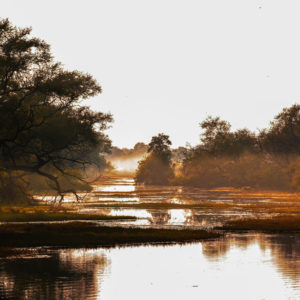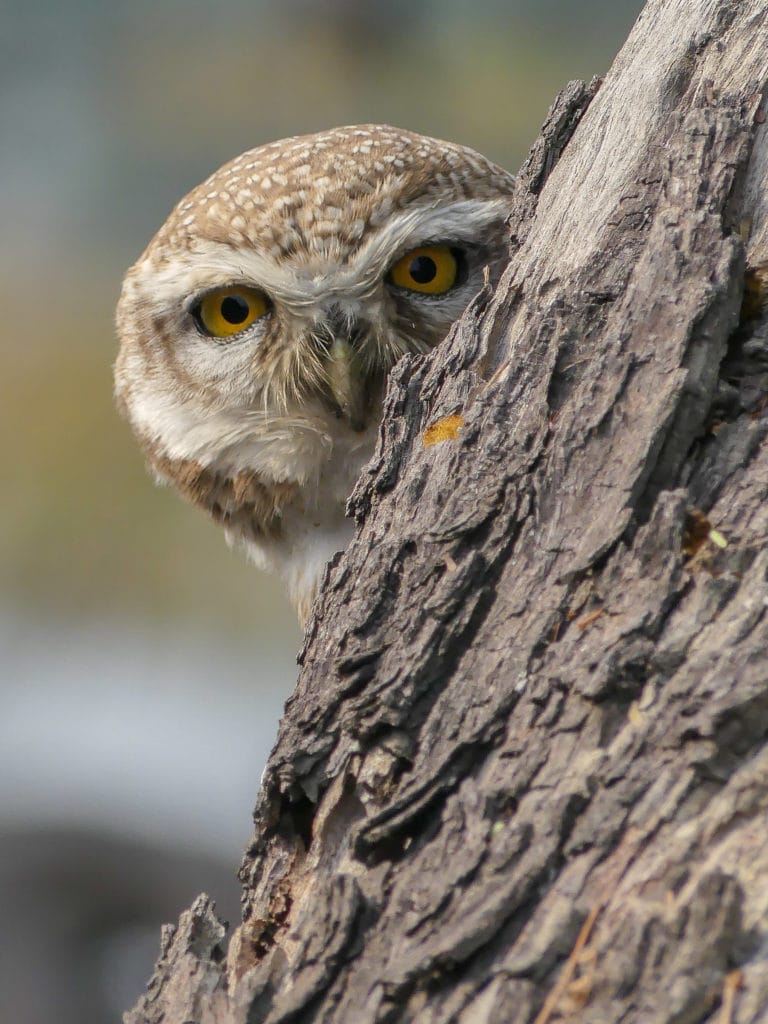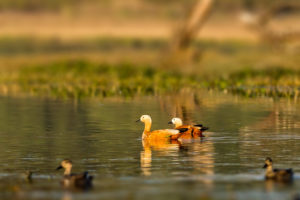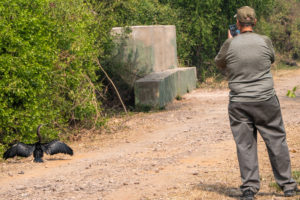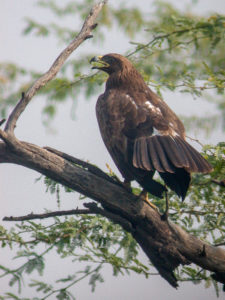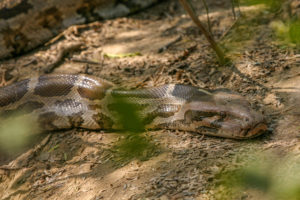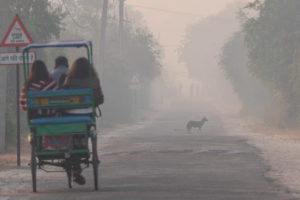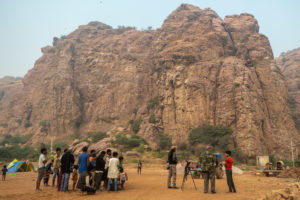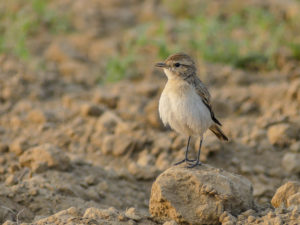Location and Habitat
Keoladeo Ghana National Park (“KNP”) is located in the northern state of Rajasthan in India. Initially called the Bharatpur Bird Sanctuary (because of its location), the place soon received the credit of a national park in 1982. It further attained the tag of UNESCO World Heritage Site in 1985, and is also a Ramsar site. The name Keoladeo Ghana comes from Keoladeo—name of Lord Shiva (because of a Shiva temple in the park), and ghana referring to dense vegetation.
KNP was originally formed as a hunting ground in the late 19th century by the then King Suraj Mal, who wanted to practice his duck hunting skills. In fact, these hunts were organised yearly as an honour to the British Viceroys—Lord Linlithgow is said to have shot more than 4000 ducks in a single day, creating a shameful world record. In fact, hunting of birds continued until 1972, when the Wildlife Protection Act was passed.
| Hotspot | Keoladeo Ghana National Park |
| District | Bharatpur |
| Other hotspots | Keoladeo Ghana NP–Sapan Mori Bund Barethaa WLS Kumher Area National Chambal Sanctuary |
| Checklist | Rajasthan |
Initially a natural depression, the creation of artificial bunds helped regulate the flow of water into the park, thus creating different habitats for birds of various descriptions. Plantation of native trees further created newer habitats. Thus, the overall human effort in landscaping helped create a diverse range of habitats—from wetlands and marshes to grasslands, scrub, and thick woodland. It is no surprise, then, that this 29 sq km area is one of India’s most sought-after birding destinations.
Birding
Keoladeo Ghana National Park has 388 species reliably recorded, with 398 for the entire Bharatpur district (which includes nearby sites such as Bund Baretha). The diverse range of habitats make the park especially conducive for birding.
Just as you enter the park, you walk through a dense patch of woodland. Common birds here include Coppersmith Barbet, Black-rumped Flameback, Indian Robin, Oriental Magpie Robin, Spotted Owlet, Large Grey Babbler, Grey Francolin, and Rose-ringed Parakeet. In the winter, you can also find migrant Grey-headed Canary Flycatcher, Black Redstart, both Taiga and Red-breasted Flycatchers, leaf warblers including Hume’s, Greenish, and Common “Siberian” Chiffchaff, and Lesser Whitethroat. Sulphur-bellied and the similar-looking (but very different in behaviour) Tickell’s Leaf Warbler, and the Brooks’s Leaf Warbler, may be found if lucky. Brooks’s Leaf Warbler is an uncommon (and thus sought after) species confined to North India, plus parts of Pakistan, Afghanistan, and Kyrgyzstan, and should be looked for in Acacia and Prosopis bushes.
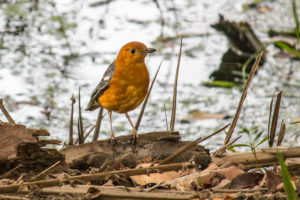
Check the Nursery area which can be good for wintering flycatchers and thrushes, including Tickell’s and Orange-headed, plus roosting Large-tailed Nightjars. The undergrowth at the entrance to the boating area near Shanti Kutir sometimes holds a wintering Siberian Rubythroat.
At Sapan Mori both the paths leading off the main track can be good, and for dry country birds it is good to explore the south-eastern end of the Park beyond Mansarovar. Unfortunately access has been restricted generally, and few of the side paths allow a circular route any more—you have to backtrack to the main path.
The spectacular waterbird concentrations are perhaps the biggest attraction in the park. In peak winters following a good monsoon, the water bodies are filled with hundreds of thousands of birds of many species. Ducks and waders abound: Green-winged Teal, Gadwall, Northern Pintail, Northern Shoveler, Indian Spot-billed Duck, Ruddy Shelduck, Common Pochard, Red-crested Pochard and Tufted Duck are aplenty in the winters, and Indian birders (maybe not Europeans! keenly look out for the scarce Mallard. More luck, and patient scanning, is required for a true rarity such as Falcated Duck, Baer’s Pochard or Baikal Teal, all of which are less than annual. Bar-headed Geese and Greylag Geese are also found in great numbers, and there is the possibility of finding a Greater, or even Lesser, White-fronted Goose among them.
Waders are also obvious, with large flocks of Ruff, a good variety of Sandpipers including Marsh, both Spotted and Common Redshanks, Little and Temminck’s Stints, Common Greenshank, Pied Avocets, Black-tailed Godwit, and many Black-winged Stilts—easily spotted on shallow waters or on the bunds. Rarer species such as Grey-headed Lapwing, Sociable Lapwing, and even Asiatic and Long-billed Dowitcher, are seen from time to time.
Comb or Knob-billed Duck, Cotton Pygmy Goose, Lesser Whistling Duck, Great White and Dalmatian Pelicans, a full selection of herons, egrets and cormorants, may also be seen, and it is impossible to miss the opportunities for Oriental Darter photography! Make use of the watchtowers overlooking the wetlands to get a great elevated view of these birds, and really appreciate the numbers.
Sarus Cranes are another big (literally) highlight, as are Black-necked Storks, and many noisy pairs of Painted Storks in their breeding colony close to the main path. While at it, also keep an eye out for a Pied Kingfisher hovering above the wetlands, or a Common Kingfisher patiently perched on a small branch. Crakes include Brown, Baillon’s, and Ruddy-breasted, but are difficult to see, with bitterns—Yellow, Cinnamon, and Black—often more confiding in the denser reeds. Do survey these habitats, but you need to be especially quiet and patient with these shy birds! These habitats will also have Blyth’s Reed and Clamorous Reed Warblers, and there are usually one or two Smoky, Dusky and Moustached Warblers, for the most patient and/or lucky. There are also records of the Spotted Crake and Water Rail, both scarce birds in India.
Raptors are yet another major highlight of Bharatpur. Many of the acacia treetops will have one or other raptor perched, serving as a vantage point for them to survey the wetlands or the grasslands. Residents like Shikra, Black-winged Kite, Egyptian Vulture, Bonelli’s Eagle, Oriental Honey Buzzard, and Indian Spotted Eagle, are quite common—this is probably the best place in the world to see the latter. Migratory raptors, including Greater Spotted Eagle, Steppe Eagle, Imperial Eagle, Tawny Eagle, Eurasian Marsh Harrier, Pallid Harrier, Crested Serpent Eagle, Booted Eagle, Osprey, Eurasian Sparrowhawk, and Common Kestrel, join them in the winter, and it is not unusual to find 20 or more aquila eagles in a day.
Indian Scops Owl can be found roosting in the acacia trees and the cycle rickshaw drivers know their favoured spots, while the Dusky Eagle Owl—one of the stars of Bharatpur—is found in several locations. Brown Hawk-Owl and Oriental Scops Owl are also occasionally seen as winter migrants.
Other birds of interest, especially in the grasslands and open habitats include larks—Ashy-crowned Sparrow, Crested, Greater Short-toed, Indian Bushlark, and Oriental Skylark—and pipits, such as Paddyfield, Blyth’s, Tawny, Long-billed, Olive-backed, Tree and Rosy. Oriental and Small Pratincoles, Chestnut-bellied Sandgrouse, and Indian Thick-knee, are also possibilities, and both Common and Demoiselle Crane flocks drop in regularly.
It is worth noting that, since its inception, the park has unfortunately lost some of its notable and sought after species. The Spotted Creeper is no longer seen, Marshall’s Iora very rarely now and, most famous of them all—the Siberian Crane, which last visited in 2002 and sadly will not be seen again following the extinction of this particular population.
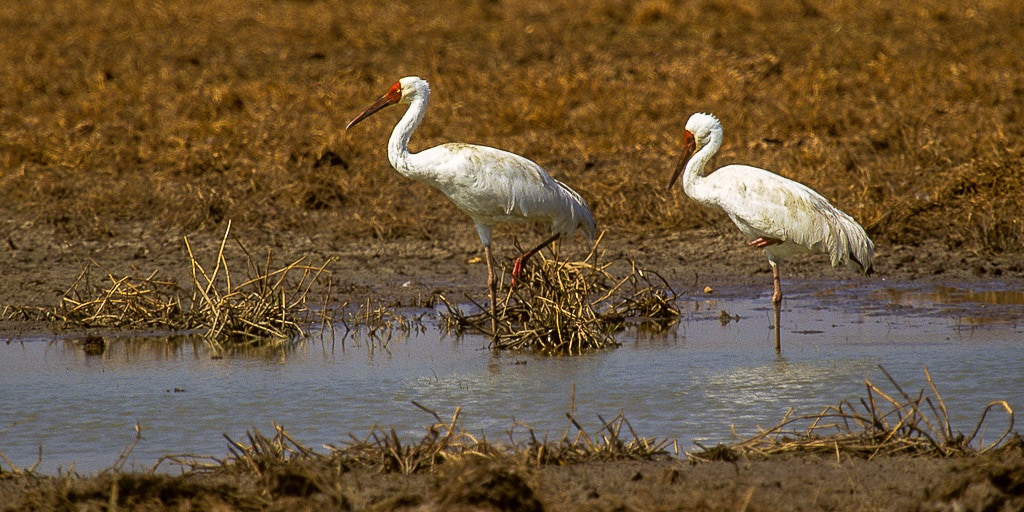
In all, however, KNP offers immense possibilities for birdwatching and is undoubtedly a must visit for serious birders and beginners alike. Even cultural tours of the region usually visit, because the experience is one never to be forgotten.
Other Wildlife
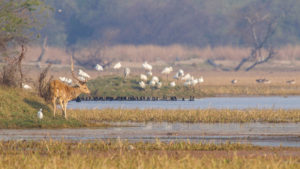
Apart from the diversity of birds, Bharatpur also boasts of a plethora of other animals, with 43 documented species of mammals. Ungulates such as Spotted Deer and Nilgai are ubiquitous, and it is easy to also spot Golden Jackals along the tracks. Others, including Indian Hedgehog, Indian Porcupine, Wild Boar, Grey Mongoose, Common Palm Civet, Bengal Fox, and Striped Hyena, are also present, but need a fair bit of luck to spot. Wild felids include the Rusty Spotted Cat, Jungle Cat, Fishing Cat, Leopard Cat, and Common Leopard and, on one instance, a Tiger dispersing from Ranthambore to Kaila Devi Sanctuary in 2010—which was later captured and relocated to Sariska. Before this, the tiger enjoyed four months in the park, preying on domestic cattle and Nilgai!
One can also spot reptiles such as the Indian Rock Python (often seen basking in the warm winter sunlight, so frequently that there is a site within the park called Python Point), and Bengal Monitor lizards, with very occasional sightings of rarer snakes such as Cobra and Krait. Do try your skills in identifying the multitude of attractive butterflies and moths.
Logistics
Weather and Timing
Winter (November–March) is the best time to visit Bharatpur. The temperature drops to single digits in the mornings. It’s a sight to see waterbirds lazing on the various pools, with a blanket of mist hanging above them. Wait to catch a sight of the first rays of warm sunlight falling on the landscape, and the birds getting the energy to start a new day. Whilst it soon warms up, you will need multiple layers to stay warm in the early evening. You should carry water and snacks—whilst there is a canteen at the Keoladeo Temple which can usually provide a welcome cup of chai, it is very limited for food options. Please take waste back with you and dispose of it properly.
September–November, after the monsoon, is also an ideal time to go. It is not as cold, and there is less crowd. Whilst there are not as many birds as in winter, there is much breeding activity and a chance of some interesting passage migrants.
Summers (March–August) can get very hot (more than 40 degrees Celsius) with the dry heat typical of north India. Water levels recede, and winter visitors have left, leaving resident birds focussed on breeding, and the few summer visitors that come to this region.
Getting There and Around
Bharatpur is easily accessible by road and train. The nearest airport is New Delhi, which is connected with all cities in India and major cities abroad. Jaipur and Agra also have airports. However, Delhi provides the best connectivity. From New Delhi, Bharatpur is 200km away and takes about four hours to reach. One can keep an eye out for interesting wildlife in the fields on the way, including Nilgai.
Most of the hotels and resorts are very close to the park gate, and hence a short walk away. Once in the park, it is best to hire a cycle rickshaw or a bicycle. Although walking is a possibility, the park is quite large and it will take time and energy to cover the entire area by foot. Bicycles give you the freedom to go at your own pace and cover a greater area, but you should also try the rickshaw experience. Not only will you have ample space to sit and carry your scope and camera, the rickshaw drivers are very knowledgeable about the park and the location of key birds.
While at Bharatpur, it is worthwhile to visit the Nature Interpretation Centre funded by Swarovski, where there is a Sarus Crane made out of crystals! The souvenir shop has printed T-shirts, hats, postcards, books, paintings, etc. Cafes near the gate are good to stock up on snacks and light drinks.
Accommodation and Food
Bharatpur has multiple accommodation options, ranging from basic to high-end resorts. Hotel Sunbird is a good option for independent travellers, being very close to the park (less than 5 minutes walk), with good and hygienic food, and open space for groups to hang out and spend a leisurely evening, discussing their day. Other hotels include Pride Kadamb Kunj (where we stayed on our recent tour), The Birder’s Inn, Chandra Mahal Haveli and The Laxmi Vilas Palace. The RTDC managed Bharatpur Forest Lodge is conveniently located inside the park. Contact us for any advice and for booking a Bharatpur visit.
Other Places of Interest
For birdwatching and nature, trips to Chambal and Sariska are good options. The Chambal River is famous for Indian Skimmer, and there are also good chances of spotting Black-bellied Tern, River Tern, Little Tern, Ruddy Shelduck, Black Stork, Great Thick-knee, etc. Chambal is also famous for Gharials and Gangetic River Dolphins, both of which are endangered and are of conservation concern. Also lookout for Mugger Crocodiles and various turtles basking on fallen logs or sandbanks.
Bund Baretha, a wildlife sanctuary in Bharatpur district, has recorded 297 species of birds. The dam, constructed by Maharaja Ram Singh on the Kukand River, is the largest in Bharatpur, supplying drinking water. Apart from waterbirds—the large expanse of open water attracting species not commonly seen at Keoladeo Ghana itself—do check out the surrounding woodlands and marshy areas en route, e.g. for Brown Crake, Paddyfield and Moustached Warblers, Red Avadavat, and Striated Babbler.
Bayana nearby is a reliable site for the now critically endangered Indian Vulture, which used to be seen in thousands inside Keoladeo Ghana itself.
Kumher is a dry agricultural area not far to the north-west of the sanctuary. It is a good site for Indian Courser, as well as wheatears and larks, and occasionally Stoliczka’s Bushchat.
Sariska Tiger Reserve is also located in Rajasthan, and is 150 km from Bharatpur. A vast expanse of forest landscape which has Tiger as well as Leopard, Striped Hyena, Sambar, Spotted Deer and other mammals, plus birds including Painted Spurfowl.
For those interested in history and culture, there are many sites within a short driving distance of Bharatpur. The most famous one is undoubtedly the Taj Mahal in Agra—one of the seven wonders of the world. Keep aside a day to explore the Taj along with Agra Fort, which also has some very fascinating architecture. A short drive away from Agra is Fatehpur Sikri, another heritage site.
Useful Trip Reports
Whilst plenty of people visit Bharatpur, not too many trip reports give more than just a species list. Here a few useful ones.
- Keoladeo Ghana National Park, Dr Ian D’Souza—wonderful photos and description of the experience
- Bharatpur: Paradise Regained, Bikram Grewal—the usual readable account from Bikram
- Bharatpur & Chambal River Birding, Bubo Birding—detailed report from our short birding tour
- Bharatpur, Pangot and Corbett, Daniel Branch—brief but helpful information about Bharatpur in a nicely illustrated report
- Andaman Islands, South India and North India, Bruce Wedderburn—good detail for Bharatpur and surrounding sites, including non-birding ones
- India: The Long Way Down, Max Breckenridge—good detail for Bharatpur and nearby sites, on a long tour of India
Bharatpur is a must visit for any birder. We include it on many of our bird and wildlife tours, including the single best tour of North India, and it also makes an easy short break from Delhi. Contact us if you wish to visit and we’d be pleased to discuss ideas with you.
